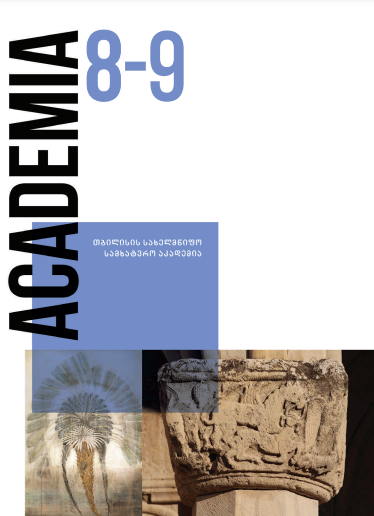Architectural Heritage of the 20th Century – Tbilisi Metro Stations
Main Article Content
Abstract
The first subway opened in Georgia’s capital Tbilisi on January 11, 1966, back when the country was incorporated into the Soviet Union as one of its Soviet Republics. The first subway stations were designed when the Soviet Modernism, a new stage in Soviet Georgian architecture, gained a foothold to replace the style introduced in the period of Stalinist empire. This transition was related to certain domestic policy changes and a relative degree of freedom allowed under the totalitarian regime.
Chronologically, the stations in Kyiv, Ukraine and Baku, Azerbaijan (1958-1967) are the closest ones to those designed in Tbilisi compared to the stations from any other Soviet city. Notably, however, old trends are most vividly reflected in the architecture of the Kyiv stations.
The Tbilisi subway consists of two lines, with the second one added in 1979, still under the Soviet rule. In terms of architectural design, the stations built along these two routes differ from each other: architectural composition of the stations from the 1960s features both overground and underground sections, while the stations on the second line showcase only overground structures. The present article distinguishes three architectural types of Tbilisi subway stations: 1) overground stations without underground sections (Didube and Elektrodepo (modernday Gotsiridze) Stations, both designed by architects Nikoloz Lomidze and Givi Modzmanishvili); 2) Stations with both overground and underground sections, with the overground structures incorporated into the other buildings (Train Station Square (modern-day Station Square) designed by architects Revaz Bairamashvili and Davit Morbedadze, also Lenin Square (modern-day Freedom Square) designed by architects Revaz Bairamashvili, Vladimer Aleksi-Meskhishvili, and Ketevan Kobakhidze, and the other stations), and 3) stations with standalone overground pavilions designed near or directly in garden squares. For example, Rustaveli (architects: Levan Janelidze and Otar Kalandarishvili), 300 Aragveli (architects: Tamaz Tevzadze and Giga Batiashvili), Nadzaladevi (architects: Tamaz Tevzadze and Ramaz Kiknadze), and Isani (architects: Nikoloz Lomidze and Givi Modzmanishvili).
What makes the architecture of Tbilisi’s subway stations different from their counterparts is their individualistic approach. They usher in modernist trends in the Georgian architecture of that time: simplicity of form, large open glass facades facilitating active communication between the natural environment and interior architecture, and the use of thin-shell architecture technology - all these features were new to both: Georgian and Soviet architecture. All stations share one common decorative feature - relief sculpture, which is made of stone and metal panels, the latter being especially popular during this period because of the growing interest in medieval Georgian metal sculpting. Using metal reliefs is a characteristic Georgian architectural décor of the 1960s. Equally noteworthy is employment of color ceramic panels and mosaics.
The subway stations are useful for studying the period of the Soviet Modernism from the ideological and national
points of view and considering the subsequent changes in the post-Soviet era.
